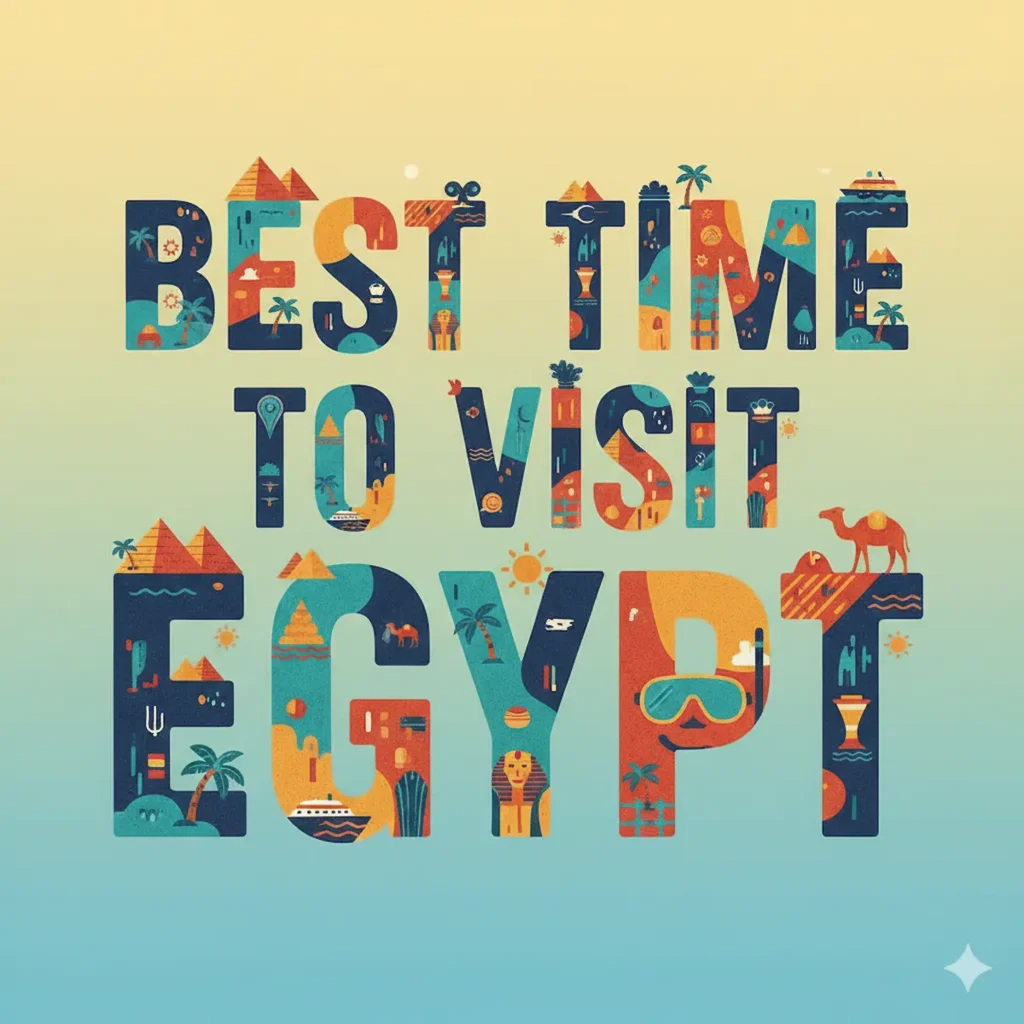Cairo Highlights
Cairo highlights, the fast-paced capital of Egypt, is the intersection of four millennia of development and contemporary lifestyle; it has long attracted over a thousand tourists. Including that treads the desert and the grand pyramids, in adjoin to the elaborate streets, which are full of nooks and spots connected with food, people, music, and art. Entertainment in this city is invariably hailed by all those who have had the great pleasure of exploring it in one of its many folds.
Egypt’s capital city is notable for its numerous religious structures as well as its museums. Just take into account the distance covered in the quest to visit a few of these places: you can have some fun during the day making your way through the structures that make up the Pyramids region, Tour the Egyptian Museum and as the sun goes down in that page cinch the slack by either moving on to the Nile for a cruise or visiting a bustling market hall in the city.
We will take you on a journey around Cairo and What Is Egypt Best Known For?, covering 20 of the best places in the city. This will include overrated sites, not-so-popular places but extremely admired by the local population, and the best things to do in Cairo, or visiting other destinations in Cairo, Egypt, to make it a trip to remember. No matter how many times you have gone to the city or how soon you plan to return, you will most definitely find this informative overview helpful in a way that will encourage you to explore unfamiliar parts of Cairo.
1. The Top 20 Cairo Attractions
1. The Pyramids of Giza and the Great Sphinx
A visit to the capital of Egypt, Cairo, cannot be considered complete without the person experiencing the Spirit of Giza and of the Great White-Lion that called itself a Sphinx. These ancient creations are over 4 and a half thousand years old and are still the most popular tourist sites in the city. Such large structures had been created by the Pharaohs Khufu, Khafre, and Menkaure as their final resting places, and these are located in Giza, providing a shocked and excited awakening in the people to date.
The famous lion body with human head, the Sphinx, is one of the most hilarious images photographed in Egypt, with a cool top on it and so much tourist enigma as well. World Heritage site and the last remaining Wonder of the Ancient World.
Topmost significant in number, history, and nature
-
Iconic features that are important to the world
-
Additional information
Most recommended Hours/Days
6.30–9.30 am and from 4 to 6 pm are the best times to avoid long lines and unpleasant weather conditions.
Tickets
Purchase on the website or at the place; personal tours are also available, and the most economical one to follow if you incline.
Confession
Consider navigating around the plateau atop a horse or a camel for great scenery and unforgettable captures.
Most tourists would describe the palpable beauty of the pyramids and the gazing sphinx to be the most favorable sights in Cairo.
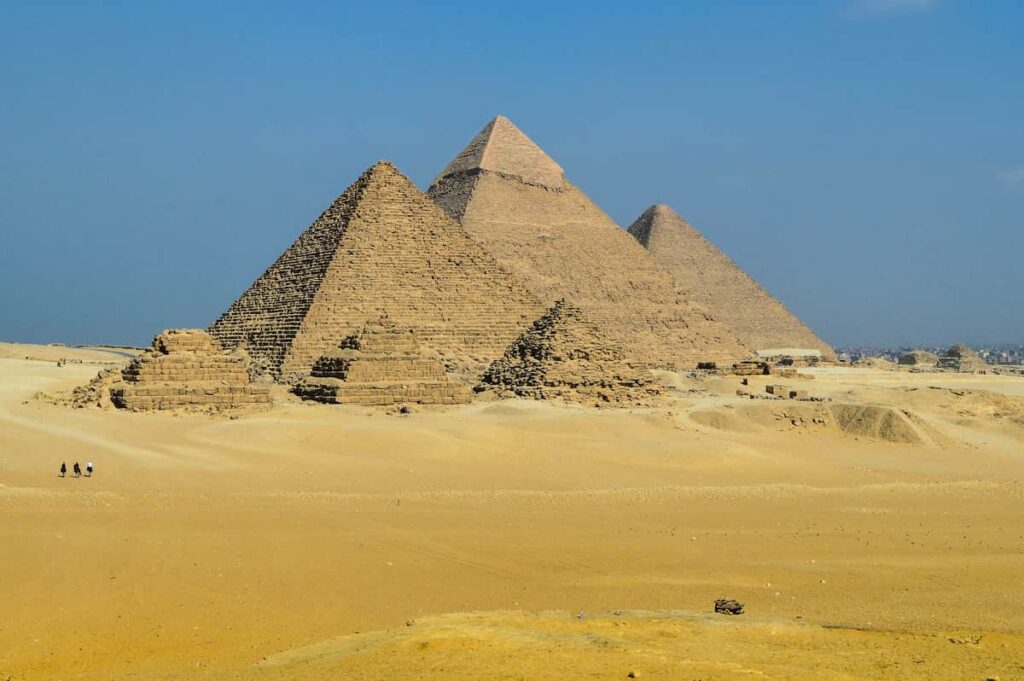
The Giza Pyramids
2. Grand Egyptian Museum (GEM)
The Great Egyptian Exhibition Building (GEM) is designed to take place as one of the most prominent cultural attractions in Cairo highlights. With a mere distance of just 2 kilometers to reach it after the Pyramids of Giza, the museum currently being constructed is in the rank of the top archaeology museums. This museum has been designed to furnish the largest display of ancient Egyptian artifacts, totaling no less than 100,000 pieces.
Archaeological Museum – Largest in the World
The GEM is a designed architectural complex, equipped with the latest technology and the best of everything to ensure that Egypt owns an invaluable collection of time-forgotten, priceless artifacts. A curtain wall of the museum that is purely made of glass makes it a tourist attraction, pointing out that it provides a view of the old as well as the new within its grounds, the age-old pyramids in the background, and the museum, modern in its architectural designs, at the forefront. Personalized interactive display stations, tours of the specially designed exhibition and event spaces comprising thematic halls dedicated to Egyptian history, have been designed.
The Grand Opening of the Grand Egyptian Museum.
You will marvel at such things as the replicas of the full Tutankhamun collection, the joint exhibition of first-time together, giant sculptures, and remarkably well-preserved scrolls of papyrus. It is constructed within the precincts of Giza, and it is convenient to get to this point from central Cairo, whereas visiting the pyramids is a must.
It was reported that this museum will be a major change to the Cairo highlights experience and will attract tourists interested in Egyptian culture and who may have never visited such a location before.
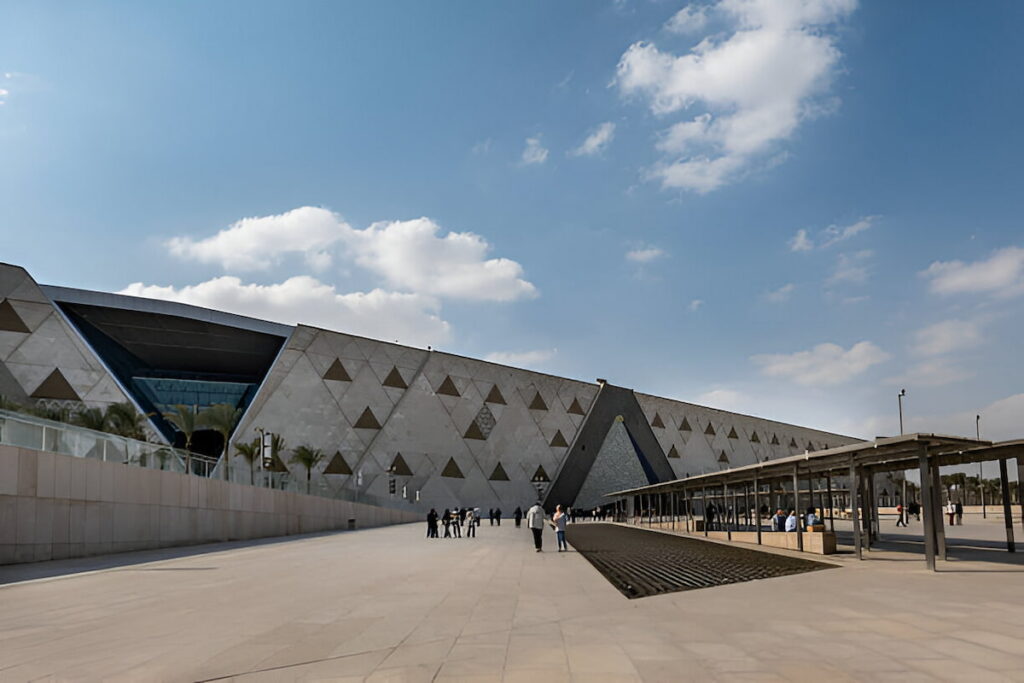
The modern exterior of the Grand Egyptian Museum in the Giza district.
3. The Egyptian Museum (Tahrir Square)
Placed in the Cairo Center of Tahrir Square, the Egyptian Museum is one of the local cultural hotspots. It has been the leading keeper of the remnants of past Egypt for more than a hundred years and is a must-visit when one is touring cairo highlights.
Famous for the treasures of Tutankhamun, and also the royal mummies
At the main floor of the huge historic building are sensational collections such as the gold treasures of Pharaoh Tutankhamun and so many others, not far from them are maybe even more fantastic displays of the destable preserved Royal Mummies, the statues, the jewelry, and the everyday appliances and ornaments in the life of the ancient Egyptians; aspects that enable them to appreciate the women without written knowledge.
Difference from the GEM
Since the new Grand Egyptian Museum is the place where most of the best relics will reside, the Tahrir Museum is still significant due to its history and its role, different from the fading away of Cairo’s heritage. It has been less adorned with technology or posters, as the museum strives to present the traditional experience of the museum located in the heart of the metropolis.
If you have the opportunity to visit the Great Egyptian Museum or the Pyramids, it is worth coming to the Egyptian Museum to complete this trip on the grounds of ancient monuments and treasures.

The Egyptian Museum
4. Khan El Khalili Bazaar
A trip to Cairo does not count unless one has taken a stroll through the bustling Khan El Khalili Bazaar, which is the city’s most famous and ancient trading area. Its construction dates back to the 14th century, which makes this bazaar full of historical myths, legends, and interesting facts. One of these is what is written by the historians: ‘Khan Al-Khalili represents the heart of ancient Cairo on Thursday. This bazaar is certainly the best to represent the real essence of this city.
Do cafes: Enjoy tea and watch the world go by out of one of the old cafes like E1 Fishawy itself.
El Khalili Khan is the best perspective for traditional commerce of Cairo, and part of it, many unique gifts and souvenirs are always available to buy.

Colorful lamps are selling at Khan el Kalili market in Cairo, Egypt
5. Al-Muizz Street
Located at the core of ancient Cairo, the city’s oldest street, Al-Muizz Street, is a museum of Islamic architecture that is not confined within a building, but is displayed for walking. This corridor is extremely alive, allowing anyone who follows it to see so many images of Cairo, such as those so many years before the nineteenth century of Cairo.
Islamic Creations in Cairo
In fact, some might say that strolling along Al-Muizz Street is like walking through a time machine. The neighborhood has beautiful sites that include renovated mosques, Islamic schools or Madrasah, palaces, gates, auditoriums, and residential buildings, which have retained their historical appearance as well as the culture when probably Fatimid, Mamluk, and Ottoman ethnic-based architecture were developed. The most distinguished are the Qalawun Complex, Sultan al-Ghuri Mosque, and many other gates, and some more fountains.
Regarding the Holy Precinct in Historic Cairo, as a result of its monumentality, the street itself is portrayed as a site, as noted by UNESCO’s Designation of Historic Cairo as a World Heritage Site. Some places, such as this one, are favoured by people interested in the past as well as those who love taking pictures, particularly in the evening when the structures are illuminated, rendering the place castle-like.
In case you have a craving to experience old Cairo, do not stop at the Pyramids but come to me for a deeper walk in time.
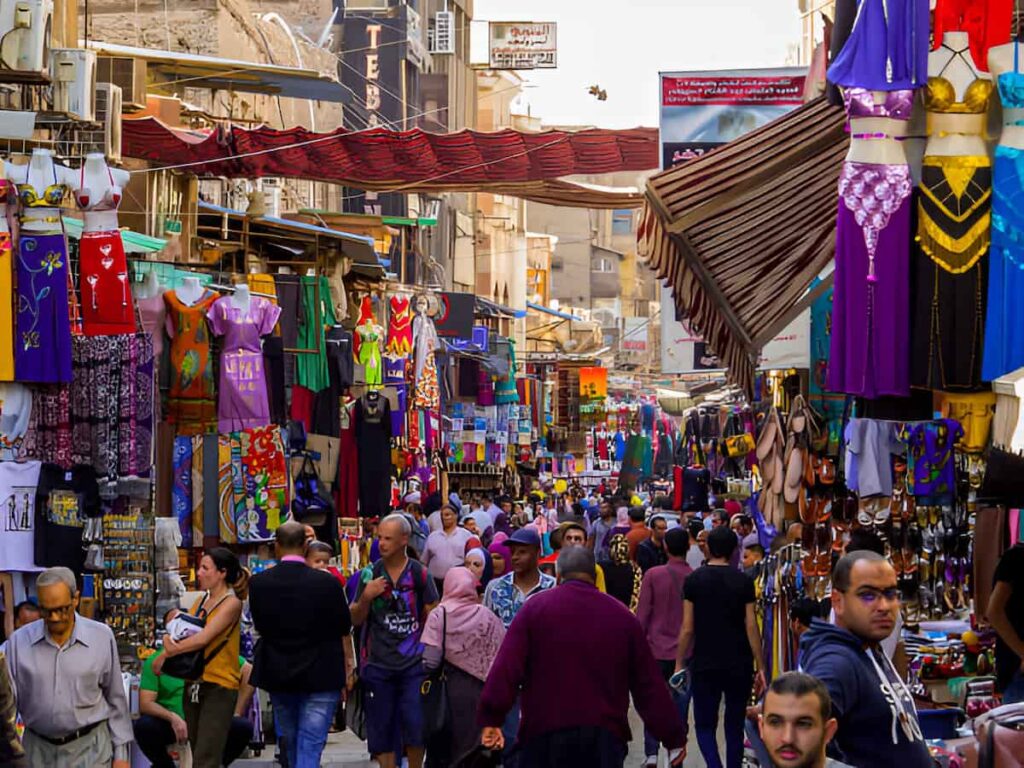
Picturesque of Al-Muizz Street in the old Cairo.
6. The Citadel of Saladin
Salah El Din’s Citadel, locally known as the Cairo Citadel, is a notable historical site among the many such sites that grace the city. Constructed by the Sultan Salah El Din in the 12th century in order to safeguard the city of Cairo from any possible threats from the Crusades, this citadel has managed to pass the test of time and still serves as a key landmark of strength and history.
Typical Historical Fortress
Also, several important sanctuaries and national monuments are exactly within the citadel, like the Medan Salihdar, the National Military Museum, or the Police Museum. For many generations of rulers of Egypt, the Cairo Citadel has borne the historical significance of a huge museum that keeps information about the medieval history of Egypt.
Views Over Cairo
Moreover, as the citadel is constructed on a hilltop, the citadel railing can almost steal the breath away with its panoramic view of Cairo highlights. Also, it is possible to see the city lines of Cairo highlights, even the Pyramids stand clearly on a rare clear day in the distance. Combining history and beauty in one spot dazzles everyone and is a tourist’s spot.

night shot in the Citadel of Saladin, Cairo, Egypt
7. Mosque of Muhammad Ali (Alabaster Mosque)
Standing at the top and center of Cairo Citadel, the Mosque of Muhammad Ali, more commonly known as the Alabaster Mosque, is another of the capital’s most recognized structures. Erected sometime between 1830 and 1848 by Muhammad Ali Pasha’s orders, this mosque is a great example of the characteristic Ottoman artistry that was prevalent in Egypt.
Ottoman building complex
The mosque is designed to look like the grand mosques of Istanbul, featuring a main dome, a vast courtyard, and two noble minarets. In the mosque’s rooms, one can observe exquisite alabaster designs together with large chandeliers glimmering with grace that form a serene character.
The Usual Attraction of Cairo
Countless photographs have been taken of this structure over time, which appears to be one of the most iconic spots in Cairo highlights, as it is visible from various locations in the city. Coming from the courtyard, a very beautiful view of Cairo can be seen, which is why a visit there is unavoidable.
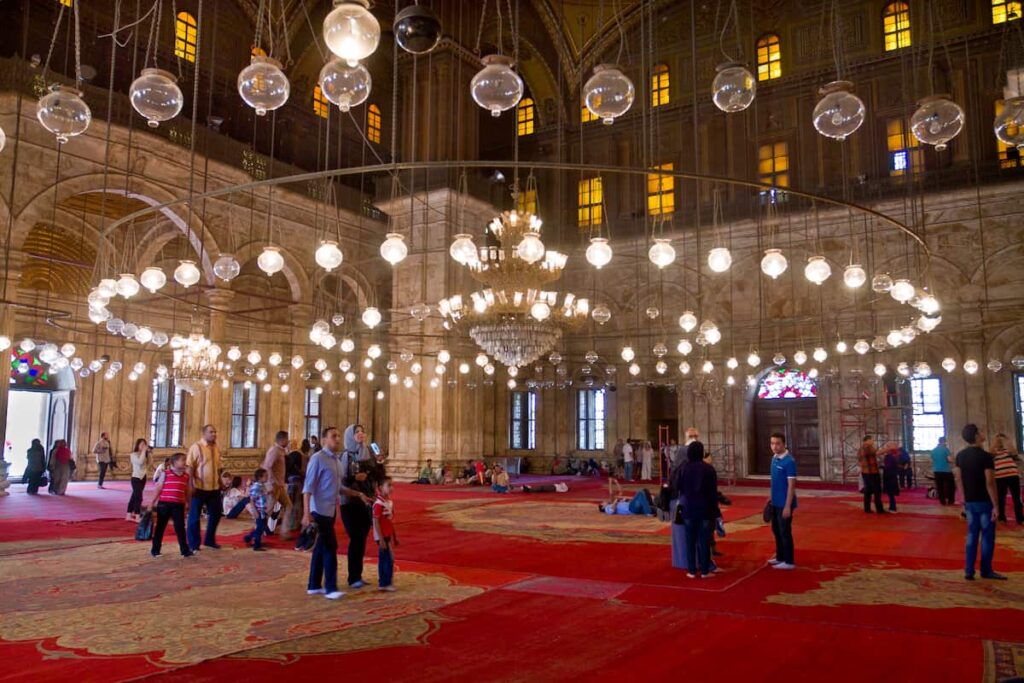
The Great Mosque of Muhammad Ali Pasha, Cairo
8. Al-Azhar Mosque
Established in 970 AD by the Fatimids, Al‑Azhar Mosque is in Cairo, and it’s one of the oldest and most significant mosques. It is revered and admired not only by the followers of Islam as a place where one can fulfill religious duties, but it is also one of the key cornerstones in the Islamic learning scheme.
Cultural and traditional significance of the mosque
For many centuries now, the institution has served as a very important center of Islamic science. It has since metamorphosed into the Al‑Azhar University, which still ranks among the very oldest and the most prestigious universities in the world. Scholars as well as students from different regions make it their business to study Sharia law, courses in theology, and Arabic literary works.
From an architectural point of view, enormous minarets and beautiful courtyards belonging to the mosque are indicative of various historical epochs, pointing out the richness of the Islamic culture in Cairo highlights as well as the mosque’s history.
Going to Al‑Azhar Mosque will show you the spiritual as well as the intellectual side of Cairo.
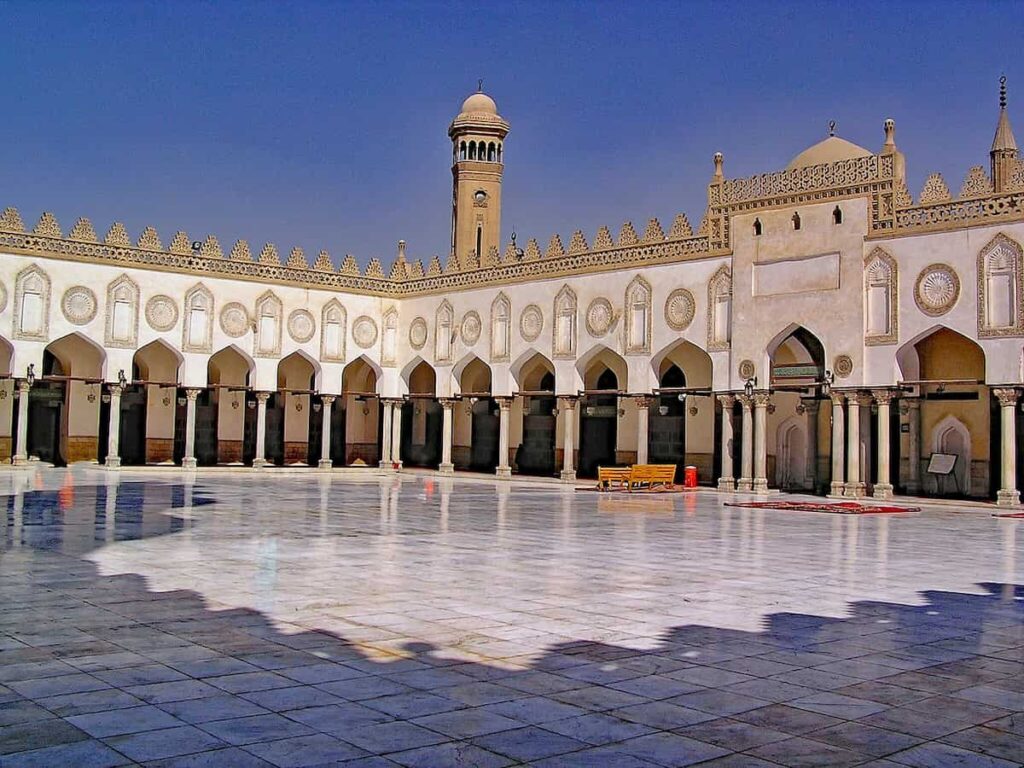
Al-Azhar Mosque
9. Sultan Hassan Mosque
The Sultan Hassan Mosque, built in the 14th century, is one of the most resplendent and architecturally accomplished mosques in Cairo highlights. Standing at the foot of the Citadel, it is a wonderful specimen of the Mamluk style and the apple of the eye of every connoisseur of Muslim art objects.
Majestic 14th-century mosque
Built by orders of Sultan Hassan in 1356, the mosque was constructed on a grand scale with high walls and open courtyards. This was one of the most extensive mosques in the Islamic world when it was built.
The decorations of the structure
The walls are constructed of many small vertical bars carved in zigzag elements of the brick style. Therefore, when it comes to building Mamluk monuments, very often these small vertical bars are utilized in these enchanting carved and brick-decorated walls.
On one side of the street leading to the courtyard of Sultan Hassan is a standing home.
A big task for the Agency will be the restoration of the beautiful Sultan Hassan Mosque, as it has been ruined by the effects of the Revolution.
Fortunately, as we mentioned previously, it will remain a part of the UN educational agency’s strategic plan for the next 10 years.
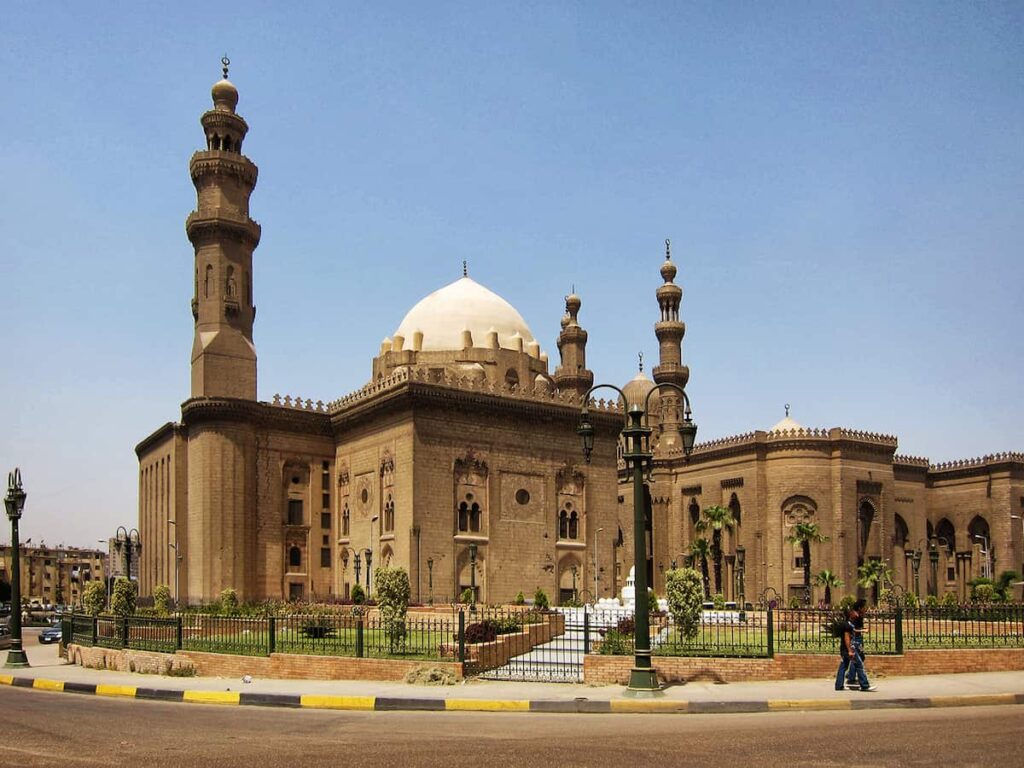
Mosque-Madrassa of Sultan Hassan Exterior
10. Rifa’i Mosque
Opposite of Sultan Hassan Mosque, there is another striking building, the Rifa’i Mosque of the 19th century, which contributes to the already rich Islamic heritage of Cairo highlights. This particular mosque was actively undergoing construction from 1869 till 1912, and was purposely constructed in a way that it harmoniously complemented its pre-existing older but no less beautiful design.
Rifa’i Mosque and its tombs of Egyptian royals and kings
The Rifa’i Mosque holds a strong affiliation with the royalty of Egypt. A large part of the mosque houses a number of tombs of the royalty of Egypt, including that of the last king, King Farouk, along with the known Iranian Shah, Mohammad Reza Pahlavi.
The large and beautiful columns of marble, their decorative ceilings, and the third chapels do nothing but merge history, spirituality, and architecture.
A trip to the Rifa’i Mosque and the adjacent Sultan Hassan Mosque is an ideal excuse to kill two birds with one stone when in a place which many historical buildings fall on a given site.
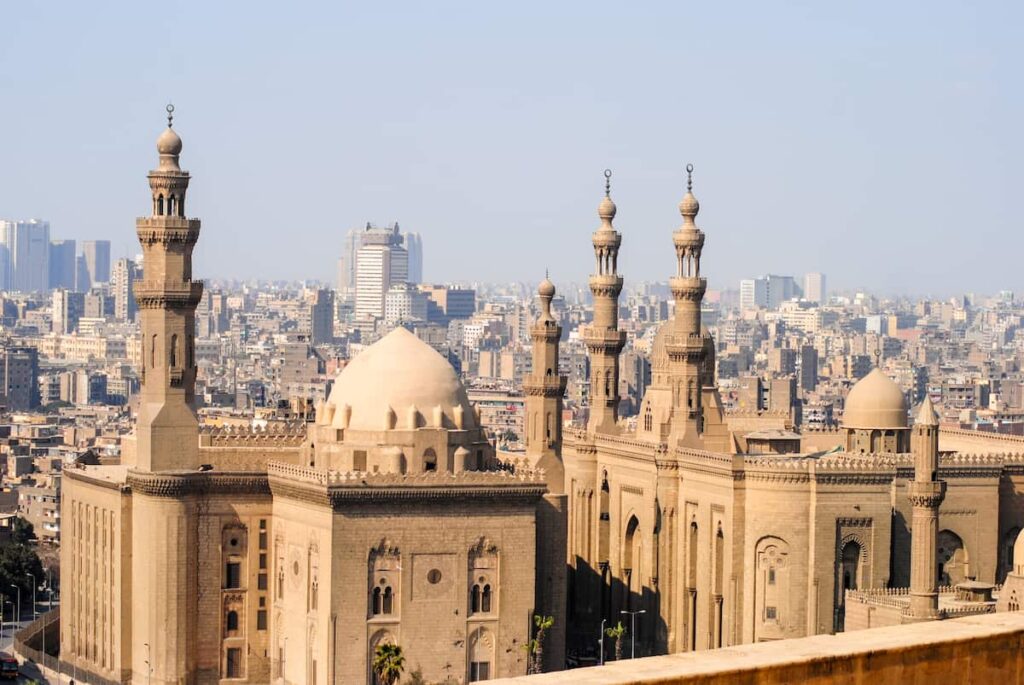
Al-Rifa’i & Sultan Hassan Mosques
11. Coptic Cairo
Coptic Cairo is an area with a history to show Egypt’s ancient view of Christianity. Some of the oldest churches belong to this district in Old Cairo highlights, where there exists an ambience completely different from that of the rest of the city.
Historical Christian district
Walking in the streets of Coptic Cairo, one can visit the Hanging Church (also called Saint Virgin Mary’s Church), the Church of St. Sergius and Bacchus, and the Ben Ezra Synagogue. These landmarks have existed through the centuries and are located in areas of Roman and early Christian Egypt.
Also in the district is the Coptic Museum, which accommodates a huge collection of manuscripts, icons, and artifacts about the Christian presence in Egypt.
Quiet, spiritual, and filled with history, Coptic Cairo is an irreplaceable stop for anyone interested in Cairo highlights and multi-religious heritage.
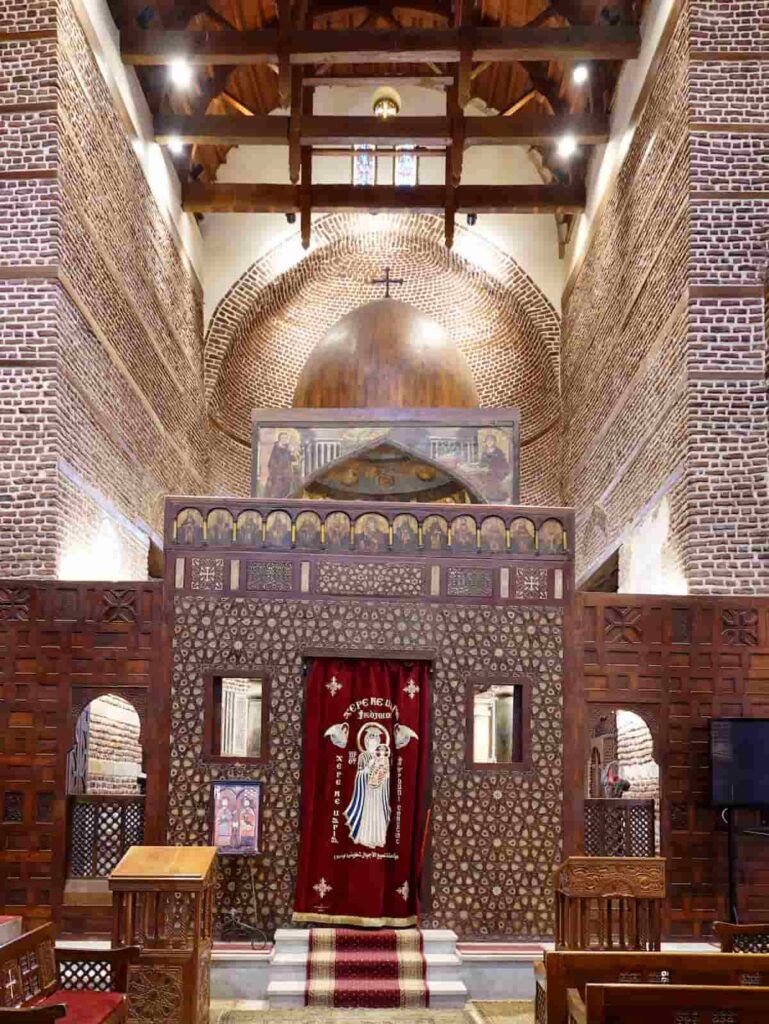
St. Sergius and Bacchus
12. The Hanging Church
Amid Coptic Cairo highlights of architectural splendor, the Hanging Church, which is the official Church of Saint Virgin Mary, stands out as one of the most distinctive buildings. The Basilica Holy Virgin Mary’s Coptic Orthodox Church, or al-Muallaqa as it has come to be known, is one of the most supported, partly by the existing Monastery church. It is not only the most ancient church among the churches of Christianity in Egypt, but also one of the oldest churches in the Islamic era. And so this is the one who challenges the most, even demands several times the date of “the following century,” what in Pre-Islam realism meant putting it into a prior century.
The church was Constructed Over the Roman Gateway,
Thus it got the name The Church of Saint Virgin Mary “al muallaqa. The congregation, therefore, added their emotional touch to the hanging up when calling this church the Church of the Virgin Mary. The church, it can be seen, therefore hangs as if it has been hung in the air.
A few lines of spaces or the first indication on the borders of the church should be respected by the viewer; they are a slight bracket of arches running through the upper part of the building, or a perspective illusion, or horizontal paint. The climb up these stairs is slippery and tedious due and it can be seen at an angle of more than 35°. Looking up from within itself, at a distance in the sky (≥20°), the end of the first return with Rubb in sight and the second one with Yellowrock in the background. The depth in the west, where no complete view of the staircases in their entirety will still be possible… The end of the staircase with Yellow Rock as the backdrop will be visible from the north.
Containing Previous Protected and Delicate Structures of Energy.
The exact date when The Hanging Church was established is not clear, but it is believed that the patriarch of Alexandria, who is also the patron of The Hanging Church, founded it. It has been decided by the Recent History of the New Patriarchal Establishment in Cairo. And the ruling Party to the Gen-
The Hanging Church has been a treasure to many generations of Christians for several centuries and has been a place where worship services are conducted even to this very day. To sum up, the church is a peaceful historical place for all generations of Christians and part of the early Christian culture in Egypt.

Views of the Coptic church in Cairo, Egypt
13. Coptic Museum
The Coptic Museum is located within the Coptic Orthodox complex in the heart of Coptic Cairo in Egypt and is especially targeted at Copts. In addition to the various restored buildings in the complex, the museum is a specific historical and cultural focus area that was established before the completion and commissioning of the buildings.
Copts are people who are likely to be native to Egypt by presupposition and an intentional understanding. A feature associated with how Copts speak beyond any other language, English, is especially significant. The would-be determining words section of an analogy in English does not present any barriers to effective communication at the Coptic Museum. Further discoveries and the more and more recent and relevant information enabling the elaboration of the existing knowledge are what the reader gets at the optic Museum through the exhibits that support the efflorescence of learning among the public. Coptically.
Barriers of speech with other ethnic groups, the most visible if not the only barrier, are deliberately removed through the use of the English language. Aesthetic, fabulous, or religious study is used to justify the great number of careful preparations and the questioning techniques employed by the exhibited material.
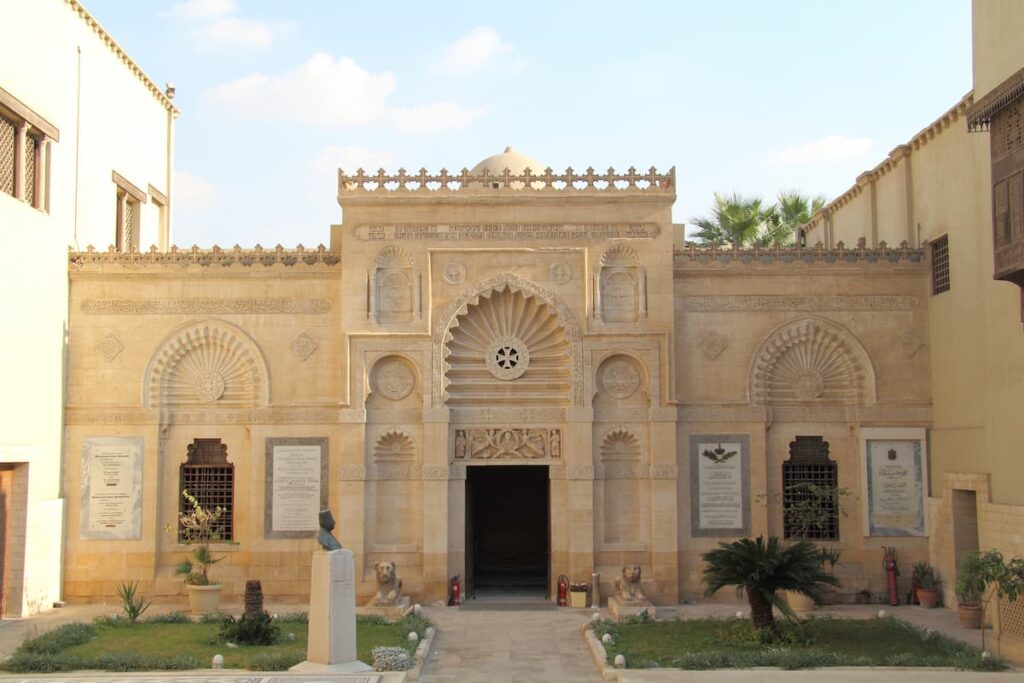
The Coptic Museum
14. Ben Ezra Synagogue
Situated within the precincts of Old Cairo highlights is the Ben Ezra Synagogue, an out-and-out Jewish sanctuary that comprises one of the oldest of its kind in Egypt, and most importantly, as well. It would not be an exaggeration to say that this is a land where not only civilizations, but time itself, have been intertwined over the years.
The Ben Ezra Synagogue was originally constructed sometime in the 9th century, but was repaired and refurbished. The synagogue is very well known for its intricate geometric patterns and wood cut-outs. One folk belief narrates that baby Moses was found here in the bushes, and hence, there is a biblical attachment to this place.
The Ben Ezra Synagogue does not carry out religious activities anymore, but this structure from the past is very important for the history of other religious groups in Egypt and has to be seen when in Coptic Cairo.
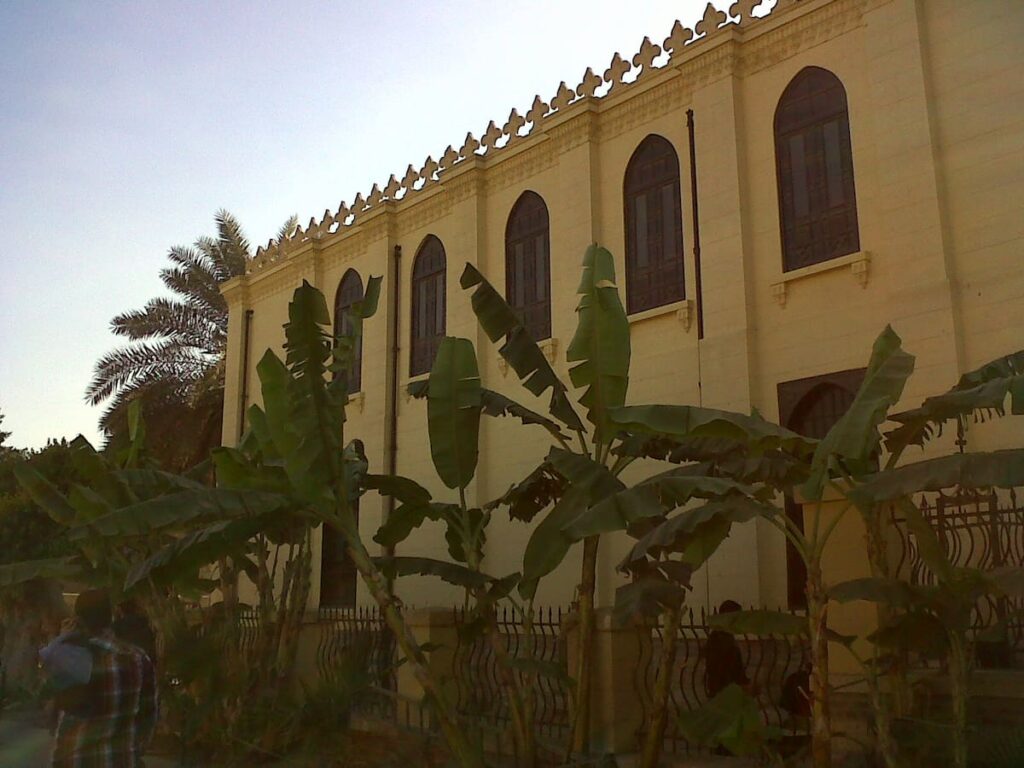
Ben Ezra Synagogue
15. Abdeen Palace
If you’re heading to the modern portion of the city, know that there’s another beautiful place to visit situated there, the Abdeen Palace. It is also one of the most interesting and significant residences in the Egyptian capital, built in the 19th century during the golden age of Khedive Ismail.
19th-century presidential palace
The best preserved nineteenth-century palace, it is reminiscent of Europe, Ottoman Turkey, and Egypt. The Victorian hospital that, at one time, was a sanatorium serves no purpose and is now only a monument to the ways of life and political events of that period.
Exhibitions on the premises.
Today, the palace is available to the public and has various exhibits that contain royal commodities, arms, orders, and ancient records. There are many things presently in those magnificent walls that tell about how Egypt “grew up” in the 19th and early 20th centuries.
In conclusion, if you’re tired of sightseeing and want to taste different sides of Cairo, come to Abdeen Palace.
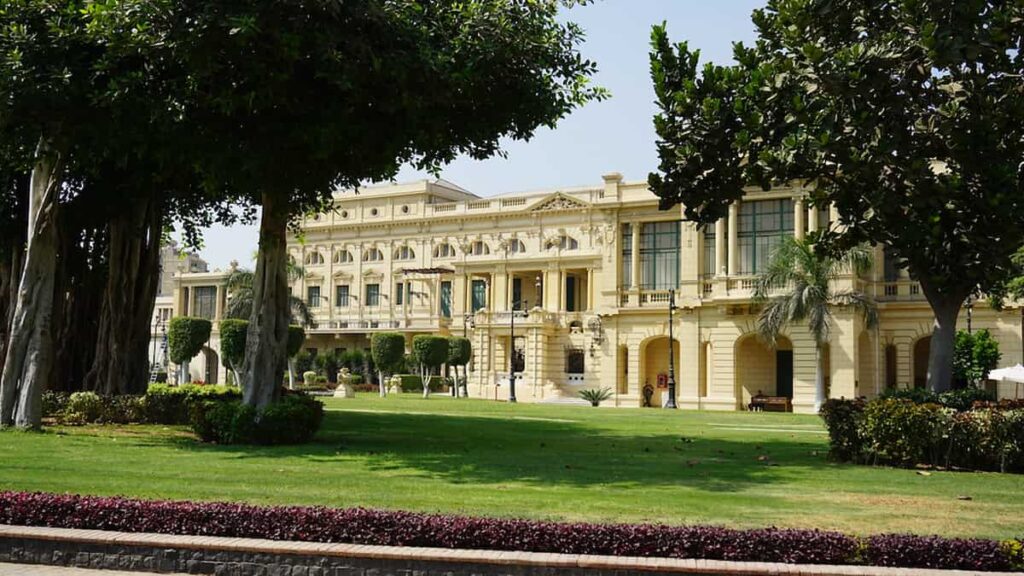
Abdeen Palace
16. Manial Palace (Prince Mohamed Ali Palace)
Up next, check out Manial Palace, which is also called the Palace of Prince Mohammed Ali. The said palace is on Rhoda Island, which is surrounded by the scenic view of the River Nile. Most importantly, this palace serves as an example of how nature and modernity can be fused together in excellent form.
Some Notes and Attractions on Rhoda Island
Manial Palace was built between 1899 and 1929, and it is a missing example of the combination of Ottoman, Persian, and Moorish touches. The compound of the palace has several structures, a private museum, and attractive gardens, which are historically rich.
As you take a stroll in the ornate corridors of the palace, you will come across ancient dressing tables, stunningly beautiful carpets, as well as centuries-old artifacts owned by Prince Mohammed Ali. It is a lush green garden provided in contrast to the busy pace of the city, making it a positively enjoyable place for photos and leisure walks, undisturbed by interruptions.
For tourists who are getting a bit tired of the usual historical monuments and rather seek some nature, Manial Palace should be on their list when they drop by Cairo.
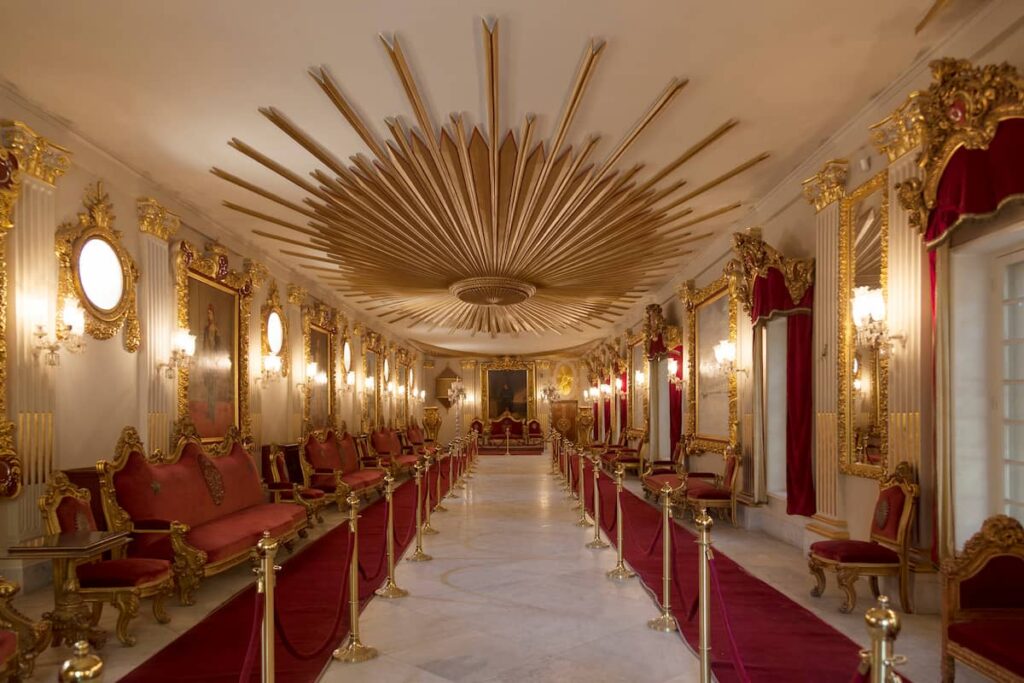
17. National Museum of Egyptian Civilization (NMEC)
If one is interested in a recorded description of Cairo highlights of Egypt-related events, both ancient times and the modern state, the National Museum of Egyptian Civilization is a place to be, since it is situated in Fustat. It was opened in 2021 and aimed to present the progress of the Egyptian society through millennia.
Hall of the Royal Mummies
Probably, the most impressive hall in the NMEC is the Hall of the Royal Mummies, where 22 mummies of monarchs, including Queen Hatshepsut and Rameses II, are exhibited in an impeccably well-set scene. Walking in this hall seems like traveling in time, and meeting the magnificent figures of Egypt’s withholding heads of state lets you imagine what they looked like.
Besides the mummies, the exhibits extend to such works of art as works of art from various periods, entertainment activities, and an adjacent waterfront that one can admire after the excursion.
Unlike the Egyptian Museum, NMEC tells a more general story of the whole history of the country and its culture, which makes it almost obligatory for people fond of ancient history.
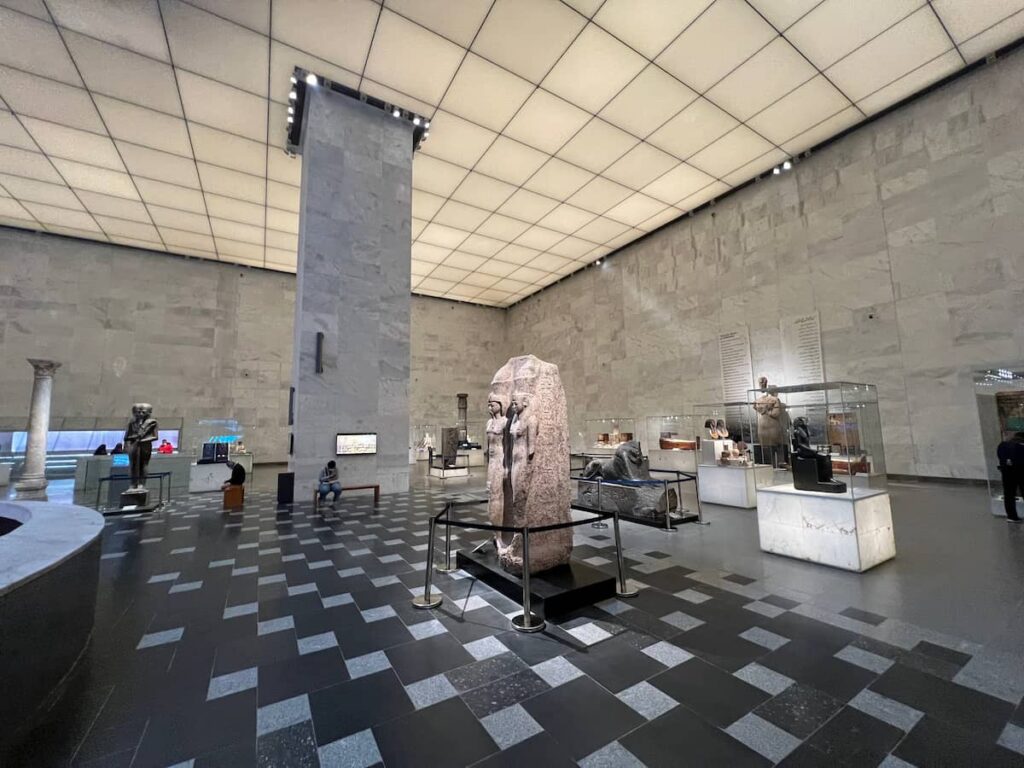
National Museum of Egyptian Civilization
18. Gayer-Anderson Museum
The Gayer-Anderson Museum is located in Cairo and sits next to the Ibn Tulun Mosque. It is considered one of the most well-kept secrets of Cairo highlights, as it is a household landmark. This house museum is housed in two old Ottoman era buildings built in the 16th and 17th centuries, which were later connected via a bridge and then restored by Major Robert Gayer-Anderson years later. The restoration was carried out between 1935 and 1942.
One can wander through and explore decorative rooms which are furnished with stunning antique furniture, ancient and impressive carpeting, inscribed art, and even objects collected by Gayer-Anderson during his time in Egypt. Every room is designed in a different manner, Persian, Damascus, or Indian, indicating the various cultural sources of those times.
This building itself is an example of the beauty that lies within Islamic human settlements, featuring wooden mashrabiyas, inner courts, and roof terraces with excellent views of the historic area surrounding the building. It is worth a visit if you want a calm experience and want to understand the history of Cairo beyond the main historical places of interest.
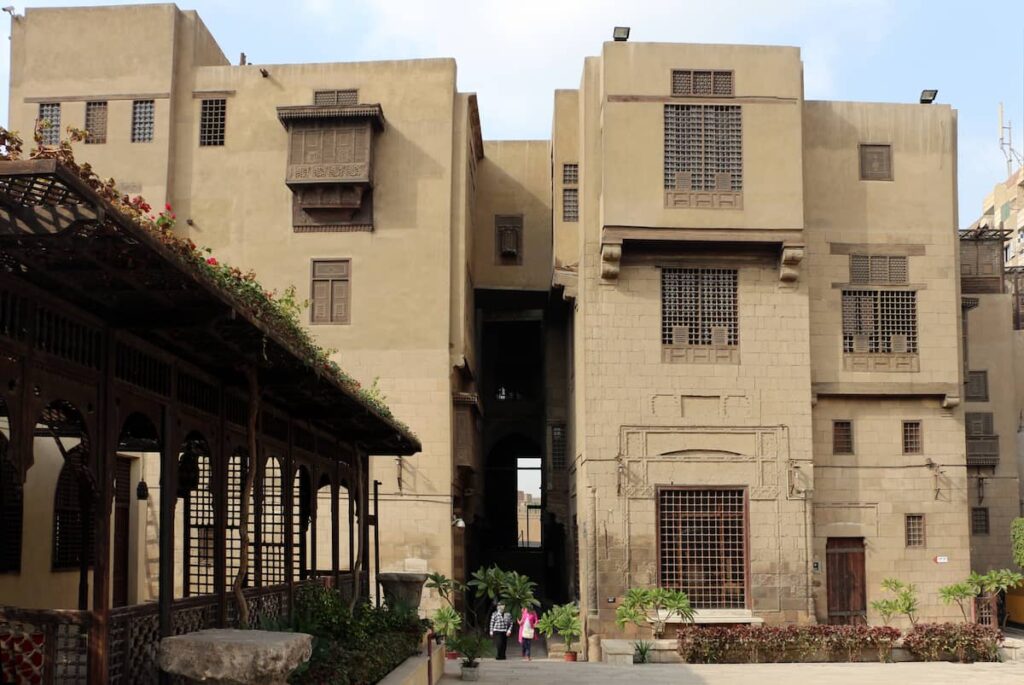
The Gayer-Anderson Museum
19. Zamalek District
Zamalek is a district in Cairo highlights, situated on Gezira Island, which represents the city’s contemporary and classy side. This neighborhood boasts an elegant architecture, green spaces, and is strikingly cosmopolitan, offering an atmosphere that is a total contrast to the city’s busy historical center. Zamalek is a community known for the arts and cafes, and zoos. With two galleries installed within restaurants in Zamalek.
Zamalek area is an eyesore with art galleries, specialty shops, and snazzy coffee houses. Many embassies and cultural institutions are situated in this area as well, making it one of the city’s most globalised areas. Its visitors are invited to enjoy museums, relax on various terraces, visit Egyptian designer shops, and visit upscale areas.
Lastly, present-day Zamalek, along with its chic entertainment spots like the Cairo Opera House, can be included in this list of tourist attractions, and so can the Aisha Fahmy Palace. Here you feel like taking a brief break, eating more, or exploring the creative part of urban Cairo.

Zamalek District
20. Nile River Cruises & Felucca Rides
Most visitors who come to Cairo highlight that without visiting the River Nile would have missed exploring the essence of Cairo. One of the arguably most beautiful and exciting ways to explore the city is by moving along the Nile. Instead of an extensive walking tour, cruising the river is more relaxing and calm way of observing the city, exposing some of the renowned structures of the city, including the Towers and the river and I imagine this includes the herds in a tent space of grazed The Overview part of the SUV is decorated with, say, colored beads. At the same time, street noise and workday noise will not disturb the Navigator’s driver. Dinner cruises are popular.
Dinner cruises
For guests who have lots of energy and still wish to party in the evening, they can opt for the Nile dinner cruise. They will not only have the pleasure of eating delicious local food, but also listen to Egyptian music, where they may see belly dance as well as other dances showing the traditional life of Egypt. These cruises usually last for a few hours, and there is a different look to cairo highlights at night, which is memorable.
Sunset felucca rides
For a laid back more down-to-earth, and cultural experience, one may decide to use a felucca for ease of transportation service. These traditional, yet simplistic wooden sailing boats are a popular choice for those looking to leisurely cruise the Nile, particularly in the evening, as they present an amazing sight with the sun going down above Cairo. This is one of the best ways to spend your time, and you will remember it for a long time.
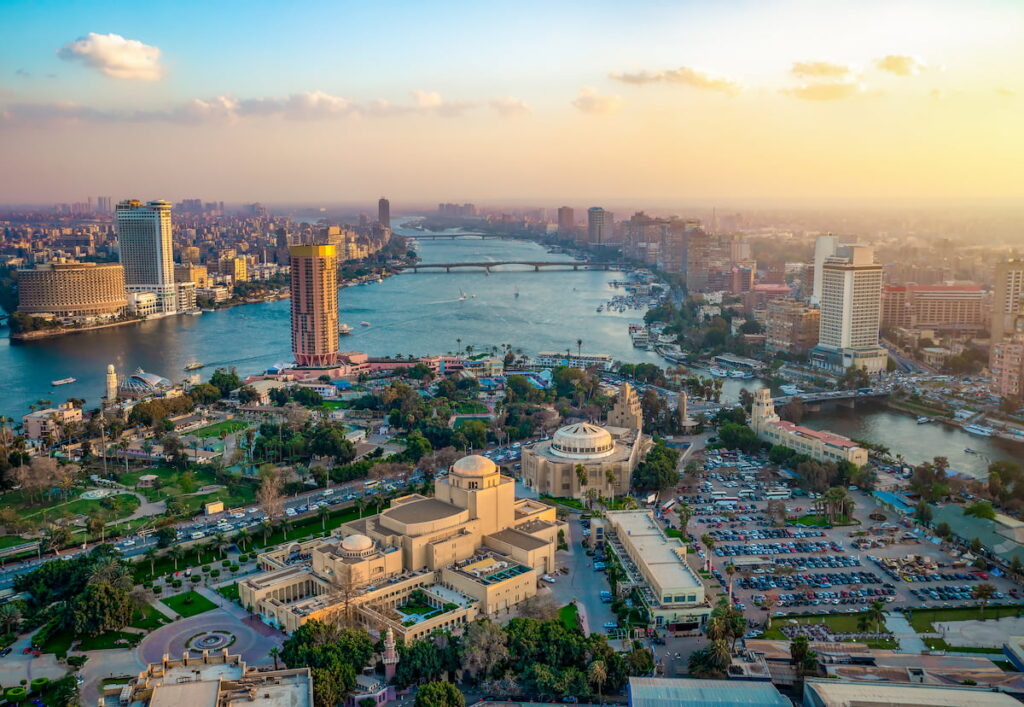
Panorama of Cairo cityscape taken during sunset from the famous Cairo tower, Cairo, Egypt
2. Travel Tips for Visiting Cairo Highlights
If you want to explore Cairo’s highlights, I recommend doing some preparation work upfront. It is best to use a hailing taxi through applications like Uber, privately hired cars or minivans, other all-inclusive transportation services, and guided tours due to considerable traffic jams. Vodafone buses are an excellent method of getting around the city for a short period.
Cultural respect is an important aspect of travel. It would be best to stay covered and to wear light, breathable clothing in the religious or other conservative sections of the city, owing to the oppressive weather. One must enter the mosque or any religious places barefoot and not take any photographs, even without any formal direct ban.
When you want to sightsee with efficiency plan outdoor sessions in the early hours of the day or the late hours of the evening when it is cooler and less crowded. This is also the case for tourist attractions such as the Pyramids of Giza and the Al-Azhar Park, which, in the morning or evening, make the view even better. Thus, such baby steps help to ensure that every moment spent in Cairo highlights is worth a stay.
2. Conclusion
As a city of a unique character, Cairo brings together the magic of yesteryears and the reality of today. The iconic landmarks such as the limestone wonders of the Pyramids of Giza and the Great Sphinx have coexisted with bustling bazaars, stylish mosques, and grand palaces for centuries on end. And with every street, every district, and every capital’s vertex, the ancient roots of civilization of the land of the Pharaohs can be traced.
A mix of architectural styles and types counters the monotony of this memorized image. A shot of the Arab League building how many people are keen on the modern high-rise venues, is a part of Dusit Thani Lake View, due to its top-skilled team of professionals.
Cairo is more than just its renowned attractions. Along with mixing and matching the contrasting sights, such as the history the modernity, it is possible to reveal a calm nature and peaceful atmosphere.
Likewise, Cairo is a resilient city and one that is bound to rule again in its full majesty, as assertions have been made regarding its magnificence, which unfortunately gets lost in the words of the chroniclers.





